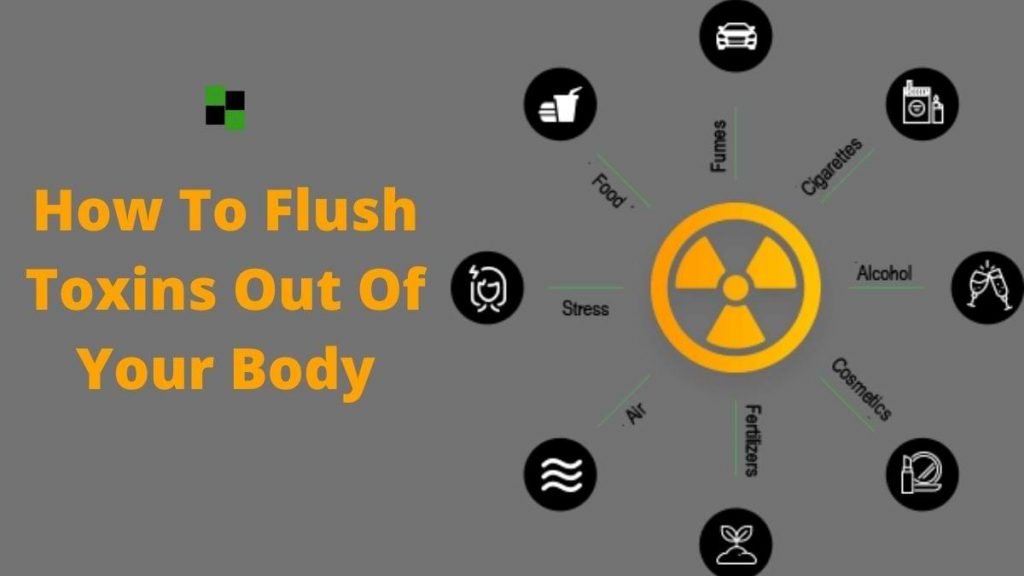Best Blood Sugar Levels Control Supplement GlucoFlow: Our bodies have a desperate need for sugar (glucose), as it is the fuel that gives our cells the energy they need to keep us alive. Without glucose, we cannot exist. Our bodies will find a way to reduce our bodily components, whether muscle or fat, into a usable supply of fuel. Problems begin to occur when the ongoing supply of simple sugars in the bloodstream (and our body’s ability to usher it into the cells with insulin) is disrupted. There are numerous reasons for this to occur but mainly that this is when blood sugar levels begin to rise and damage begins to occur within the body.
Scientists, as well as physicians, have been pursuing the elusive goal of trying to find a substance or blend of substances that could solve the rising glucose issue. Their goal has been to help avoid the damage that is done to the body by the sugar and at some point, the insulin. Those with continued rising glucose levels end up as diabetics, and most people are aware of the high disease rate of cancer, heart attack, stroke, blindness, and amputation that accompanies this disease. What many people are not aware of is that damage occurs to the body at such low levels of rising glucose. This is why it is absolutely critical to maintain balanced blood sugar levels.
GlucoFlow Helps To Maintain Healthy Blood Sugar Levels
It appears that science may have found a solution thanks to a product made from the Hops flower. The U.S. government has recognized this discovery with a patent. The ingredient from hops is actually called isohumulone and it is the only ingredient in GlucoFlow. The product works by affecting the two genes responsible for how insulin works and how fat is metabolized. After seven (7) Clinical Studies over seven (7) years, the conclusions of the scientific studies state that this product reduces glucose levels, triglyceride levels, and visceral fat. There were no noted side effects in any of the studies. This discovery is nothing short of amazing considering it required just one small pill a day to accomplish this in the studies.
Best Leg Foot Massager JSB Healthcare India 2020
Weight Loss Coffee Cappuccino MCT Natural Bulletproof Coffee
Healthy Joints Life Supplements ProFlexen
Male Enhancement Food Supplement Semaxin
Burn Fat Quickly Best Green Coffee 5K
Harmful Effects of Elevated Blood Sugar
First let’s talk about the symptoms that are annoying, but not yet life-threatening:
- Memory lapses Mood Swings Fading Eyesight
- Lack of Energy Mental Fuzziness Inability to Lose Weight
- Food Cravings.
You should consider the above symptoms as early warning signs and have your blood sugar tested. You have to maintain a healthy glucose level to remain healthy over your lifetime. We will discuss the proper blood tests later.

Increase Risk of Heart Attack
According to studies, glucose levels that rose above 4.6% in the hemoglobin HA1c test showed a direct correlation to an increase in heart attacks. As your levels rise above this, so do your risks of a heart attack. This number corresponds to fasting blood sugar levels of only 86 or a one-hour test after meals of 140mg/dl. These numbers are typically said to be OK by your doctor; however, studies indicate damage is occurring at blood sugar levels much lower than previously believed.
Blood sugar is a better indicator of potential heart attack than total cholesterol levels. Only about 50% of people with high cholesterol have a heart attack. This means people with no indication of high cholesterol, have as many heart attacks as people with high cholesterol. Blood sugar levels, on the other hand, show the risk increases in direct proportion to how high your glucose rises over 4.6% in the HA1c test. This test shows how much glucose attaches to your blood cells over a three-month time frame, which indicates how often you have elevated glucose during that time frame. High blood sugar levels cause triglycerides to be stored in heart tissue which is why it is such a perfect indicator. Unfortunately, these indicators are what doctors are currently treating as NORMAL levels. This is a direct conflict to all the studies showing the opposite. The education has not yet made it to mainstream health professionals, because most of the education comes from the pharmaceutical industry. The bottom line is you need to balance your blood sugar levels.
Increase Risk of Developing Diabetes
Did you know that a 55-year old woman whose tests range in the upper levels of normal blood sugar testing, is 13 times more likely to become a diabetic than have breast cancer, and 9 times more likely than having heart disease? And yet, even with these huge risk factors, not enough attention is paid to glucose. And once you have diabetes, much of the damage has already been done – and that is why there is so much heart disease, blindness, neuropathy, and amputations occurring after the diagnosis. You CAN avoid this life-threatening disease now by simply making the wise choice to deal with your blood sugar levels when they may be only slightly elevated, rather than waiting until you are diagnosed as Pre-Diabetic or Diabetic.
Damage to Your Nerves
Recent studies have concluded that damage to your small nerves occurs when blood sugar levels are elevated above 100 for just two hours. Again, 100 is typically considered normal for glucose by most healthcare professionals. Nonetheless, slight damage occurs every time your glucose elevates to 100 or above. And the higher the levels and the longer they stay elevated, the greater the damage. If you notice some tingling in your fingers or toes, this can be an early sign of nerve damage that may be related to blood sugar. The protective myelin sheath is actually damaged by the sugar, especially in the lower limbs. This damage occurs before you become a diabetic, and with continued high levels, becomes the reason that diabetics must check their feet every day as they lose feeling. It is the infections and problems with the damaged nerves that ultimately lead to amputation. Worldwide, someone is having an arm or leg amputated every six minutes due to complications from rising blood sugar levels and the ineffectiveness of insulin to manage it.
Damage to your Eyes
One of the many problems that occur as blood sugar levels rise and stay above 100 for a few hours is that the small capillaries which supply your eyes, organs, and skin, start to narrow to prevent damage to your body from the elevated glucose. The problem with this defensive body strategy is that due to the decreased blood flow, it starts to limit how much oxygen and nutrients get to those body parts. Damage now occurs over time, especially to the very smallest areas of capillaries, such as in the eyes. Fading eyesight is an early warning sign to you to balance your glucose before more serious sight issues, including blindness, can occur.
Damage to Your Beta Cells
Your Beta cells are the specialized cells that are located in the pancreas and are responsible for producing the hormone insulin, which is how the body shuttles glucose into your cells. As your blood sugar rises continuously and stays elevated, some of these Beta cells become damaged, die, or are no longer able to produce insulin. In the early stages of rising blood sugar levels, this is not a problem as you have plenty of cells to produce enough insulin. However, over time if you do not learn to balance and maintain those levels, at some point, your body will be unable to balance it at all, and damage will begin to occur much more rapidly. At that point, it is only three years until you are classified as a diabetic. As much as 40% of your Beta cells can be destroyed in as little as two years if you fail to manage your glucose. Unfortunately, our diets of simple carbohydrates and sugars must accept a large part of the blame, although there can be other factors such as toxins, genetics, and your immune system.
Hardening of the Arteries
Studies have confirmed that 95% of people who have diabetes have hardening of the arteries, and a thickening of the carotid artery, which occurs after meals, due to continued elevated blood sugar levels. 65% of diabetics die from some type of heart disease. Clearly, this damage starts occurring well before you are diagnosed as being diabetic.
Wound Healing and Aging
No one wants to have their skin age prematurely. However, this is exactly what occurs when you do not maintain low glucose levels, preferably in the 80 range. Sugar sticks to proteins that are required for the construction of quality collagen. Collagen is required for the repair and building of new cells. Poor cell repair and construction end up showing saggy skin and loss of elasticity. As the capillaries become restricted, the damage is done to the arteries and nerves, preventing nutrients from getting to damaged skin or wounds. Infections are often the result, as is a very slow healing process.
Weight Gain
While many think it is weight issues that cause diabetes, it may actually be the rising blood sugar levels that cause obesity. Yes, eating too much food will cause weight gain, but the weight alone does not cause diabetes. If that were true then everyone that is obese would be a diabetic, and that is not the case. While four out of five obese people are diabetic, it is still believed that elevated glucose is what caused the initial problem. Weight really starts to pile on when insulin no longer functions properly due to the cascading factors of rising blood sugar levels. Slight weight gain, however, could be a sign/symptom that you are possibly flooding your body with too much sugar and/or carbohydrates. High visceral (midsection) fat is a good indicator of potential heart disease.
Kidneys and Internal Organs
When blood flow is constricted resulting in cell death and impaired function, renal failure and damage to other internal organs become a problem. When the filtering organs (such as kidneys and liver) are damaged, the body is unable to keep up with all of the purification processes it must perform. This in turn causes toxic build-up and other dangerous issues in the body, and a cascading effect takes place.
Blood Sugar Problems Are Epidemic
In the United States alone, there are estimated to be nearly 70 million people that are Prediabetic, and millions more that have rising glucose levels. There are already nearly 27 million Diabetics in this country. One out of three of our children is expected to become diabetic; you can already see it occurring in the classrooms.
75% of the population over age sixty has glucose problems and need to get on a program – or face the devastation of uncontrolled blood sugar.
Worldwide, the outlook is even more daunting. Over 300 million people have diabetes, and possibly 900 million others have a blood sugar levels problem that needs attention.
You Can Avoid Rising This Health Issue
For years, we have tried to convince people to eat a better diet, exercise, drink water, and reduce stress. Some are able to do it, and some still need help. If you are unable to get your fasting blood sugar levels down to 80, or your two-hour glucose test under 140 at one hour, then you must do something to change your future. GlucoFlow is the only patented product with seven clinical studies that will not only help balance glucose but is proven to reduce Triglycerides and visceral (midsection) fat. Don’t settle for a life of pain, misery, or early death. Diabetics live fifteen years less than average and spend three times as much on medical care as people without the illness. Change your lifestyle and consider the power of GlucoFlow. There is just nothing as affordable or simple. It only requires one small pill a day to take back control.
Keep Your Sugar Level Under Control
Controlling blood sugar (glucose) levels is one of the most important aspects of diabetes management. It will make you feel better in the short term and it will help you to stay fit and healthy in the long term.
The National Committee on Prevention Detection Evaluation, the chromium, and many interesting articles. People who do not have diabetes keep their blood glucose levels within a narrow range most of the time. The beta cells in the pancreas are able to produce just the right amount of insulin at the right time and they are constantly fine-tuning the blood glucose level. People with diabetes do not have this fine control over their blood glucose levels.
This might be because the beta cells have been destroyed and there is no insulin production at all, as in Type 1 diabetes. Alternatively, it may be that the body does not respond to the insulin, and/or not enough insulin is produced when it is needed, as in Type 2 diabetes. The approach to managing Type 1 and Type 2 diabetes is slightly different, but whichever type of diabetes you have, you will still need to step in and take over that fine-tuning of your blood glucose level.
Controlling blood glucose levels is a bit like trying to lasso an unruly animal. Blood glucose is dynamic; it changes constantly and it is influenced by a host of factors including your choice of food, how much you eat, the timing of your medication or insulin, your emotions, illnesses, your weight, and your body’s resistance to insulin.
Some of these factors are relatively constant from day to day and are quite easily accounted for; some factors are more variable. No two days are ever exactly the same, or entirely predictable, and this makes it difficult. So, blood glucose is not easily lassoed.
In practical terms, you will need to learn about those things that raise your blood glucose level and those things that lower your blood glucose level. Then you will need to balance these factors on a day-to-day and possibly even hour-by-hour basis. This means coordinating medication, food, and activity levels, whilst making appropriate allowances for stress, illness, or changes in your daily activities.
You will be aiming to avoid the extreme highs and lows, trying to manipulate your blood glucose toward the normal range. You will be doing regular finger-prick blood glucose tests and using these results to help balance those things that make your blood glucose rise with those that make it fall. When you have evened out your blood glucose level you will still need to keep an eye on it and continue to make adjustments.
Controlling blood glucose is a continuous process and it will require your attention from now on, for the rest of your life. Don’t worry! It may sound daunting to you right now, but it will soon become second nature.
People who do not have diabetes have blood glucose levels between 4 and 8 mmol/l most of the time. In general, people with diabetes should try to aim for test results between 4 and 10 mmol/l most of the time. Some people pregnant women, for example, will need to aim for tighter control. Other people young children, the elderly, or those at risk of severe hypoglycemia, for example, will need to aim for higher levels.
Your diabetes team will give you individual guidance on the blood glucose levels that you should be aiming for.
In the short term, controlling blood glucose levels is important in order to avoid diabetic emergencies with very high or very low blood glucose levels. Both of these conditions are unpleasant and can be dangerous, so they should be avoided if at all possible.
High blood glucose levels in Type 1 diabetes, which is caused by a lack of insulin, can lead to a condition known as diabetic ketoacidosis or DKA which can be fatal if it is not treated in time.
Blood Sugar Balance
The human body requires energy, which comes from food. Sugars and starches, known as carbohydrates, are the most efficient energy sources. In the gut, they are broken down to glucose, which gets into the bloodstream and is delivered to various organs and muscles. Blood glucose is often called blood sugar. The blood sugar concentration in healthy individuals varies from 60 – 90 mg/dL after fasting to not more than 140 – 150 mg/dL one hour after a meal. This is called a healthy blood sugar balance. It goes back to the baseline level 2 – 3 hours after a meal.
HORMONES ESSENTIAL FOR THE BLOOD SUGAR CONTROL
The blood sugar concentration is controlled by two hormones, glucagon, and insulin. Both hormones are produced in the pancreas in response to changes in blood sugar levels. During fasting, the decreasing blood sugar levels trigger the secretion of glucagon by the pancreatic alpha cells and inhibit insulin production by the pancreatic beta cells. The increase of the blood sugar levels after a meal stops glucagon production and promotes insulin secretion by the pancreatic beta cells. Therefore, glucagon and insulin are antagonists.
Glucagon stimulates the breakdown of glycogen, a starch-like compound produced and stored in the liver, to glucose. If glycogen is depleted, glucagon triggers gluconeogenesis in liver cells. Gluconeogenesis is a process of glucose synthesis from the products of protein and fat digestion. Glucagon also stimulates fat breakdown in the adipose (fat) tissue. Insulin stimulates glucose uptake by all cells in the body, especially by muscle, liver, and adipose tissue. In the liver, insulin promotes the synthesis of glycogen from glucose. Insulin also stimulates fat production and storage in the adipose tissue.
In summary, the blood glucose concentration is self-regulated. When it is too high, insulin is produced, and the excess glucose is quickly absorbed and stored for later. When it is too low, glucagon is secreted, and glucose is released into the bloodstream.
DIABETES
The delicate and precise mechanism of blood sugar levels maintenance is impaired in diabetes mellitus, a chronic metabolic disorder. Type 1 diabetes is a condition when the pancreatic beta cells stop producing insulin. Most type 2 diabetes patients produce at least some insulin, but their bodies have a reduced capacity to absorb glucose even in the presence of insulin. Diabetes of both types results in a significant (2 – 5-fold) in the bloodstream for hours and days. Disruption of blood sugar levels regulation has multiple serious health consequences.
DISRUPTION OF THE BLOOD SUGAR BALANCE THREATENS YOUR HEALTH
A very high (>400 mg/dL) blood sugar level might cause potentially fatal conditions, such as a coma and diabetic ketoacidosis. These conditions occur predominantly in patients with type 1 diabetes when it is left untreated. However, even a moderate increase of the blood sugar levels, above 120 mg/dL after fasting and above 240 mg/dL after eating, which is typical for the early stages of type 2 diabetes, should not be left unchecked.
The most serious and consequential effect of a sustained increase in blood sugar is blood vessel damage. The latter can cause blindness because of retinal vessel destruction, heart attack and stroke due to atherosclerotic changes of the main arteries and brain blood vessels, and nephropathy because of the vessel damage in the kidneys.
Furthermore, high blood sugar triggers a vicious cycle of metabolic disruptions. Beta cells constantly exposed to glucose levels similar or higher than those normally occurring for a short period of time after eating, are forced to produce more and more insulin. In a long term, insulin overproduction might lead to beta-cell damage. Muscle, liver, and adipose cells, exposed to elevated levels of insulin for extended time periods deplete their capacity to respond to this hormone, insulin resistance worsens, and diabetes progresses.
WAYS TO CONTROL BLOOD SUGAR LEVELS
The only way to avoid the long-term complications and life-threatening consequences of diabetes is to restore the blood sugar balance. For type 1 diabetes, insulin injected several times a day or delivered with an insulin pump, is the only therapeutic way to maintain the blood glucose reasonably close to its normal levels. The proper dose of insulin is calculated based on the number of carbohydrates consumed with each meal to avoid dangerously low blood sugar levels. For the patients with type 2 diabetes, manifested by insulin resistance, rather than by the lack of insulin production, there is a variety of approaches to control the blood glucose levels.
Exercise
This is the first line of defense against the damages caused by high blood sugar levels or hyperglycemia. If you have too much “fuel” (sugar) in your blood, then aim to “burn” the excess.
Start with adding 15 minutes of any physical activity. Gardening, mopping the kitchen floor, going to a store two blocks away and back, or walking your dog will do. Just do something that makes you breathe a bit faster for a few minutes every day. Enjoy. Make it a part of your routine. Consider those minutes as a “me” time. Be consistent, and you will find yourself signing up for hikes and races in a few months.
Eating healthy without dieting. This is the second line of defense. There is not any specific diet or meal plan currently recommended for patients with type 2 diabetes by medical professionals. Any culture- or religion-based restrictions, including vegan or vegetarian, can be accommodated for a person with diabetes. The common strategy for meal planning includes avoiding processed foods, including nutrient-rich vegetables, seeds, and nuts, and keeping in mind that some foods, consumed in large amounts, might cause blood sugar levels to spike even in a healthy individual, let alone the person with diabetes. They contain relatively high amounts of glucose or starches that are easily broken down to produce glucose. Examples of these foods are grapes, watermelon, bananas, white bread, corn, pasta, potatoes, and other sweet and starchy products. Soda, chips, and candy are not mentioned here, because these are the processed foods that the medical professionals recommend limiting anyway.
Medications
For most people diagnosed with diabetes, the diet and exercise regimen is not enough to maintain the blood sugar levels in a healthy range. There are several pills and shots that help to restore the broken mechanism of the blood sugar balance.
• Glucose suppressors are represented by biguanides, better known as metformin, a pill prescribed to most of the patients newly diagnosed with type 2 diabetes. It decreases glucose production in the liver and promotes glucose delivery from the bloodstream. Consider Metformin-like medications as insulin helpers and glucagon adversaries.
• DPP-4 inhibitors promote the synthesis of insulin and decrease the synthesis of glucagon by sustaining the increased levels of yet another group of hormones, incretins. These medications are often combined with metformin in one pill.
• GLP-1 receptor agonists also increase the level of incretins. These are injectable medications.
• Insulin secretagogues include sulfonylureas, meglitinides, and D-phenylalanine derivatives. They stimulate insulin production by pancreatic beta cells. Sulfonylureas can be used in combination with any other class of oral diabetic medications besides meglitinides.
• Insulin sensitizers, thiazolidinediones, improve glucose transport and decrease glucose production by the liver.
• SGLT-2 inhibitors, gliflozins, prevent glucose re-absorption by kidneys, so the excess glucose is removed from the body with urine.
This list includes only the most commonly prescribed medications. You should discuss these and other options with a medical professional.
Powerful Weight Management Support Piperinox USA 2020
Renewed Laptops India With 8GB RAM Available On Amazon For Less Than Half The Price
Webcams With Microphone Full HD Recording Noise Cancellation
Best Rakshabandhan Gifts For Sister India 2021 Starts Under Rs 1000
Bedside Table With Drawer Storage India 2024
IN CONCLUSION
Diabetes does not have a cure yet. However, it is not a reason to give up. Medical professionals are working on an “artificial pancreas”, which is a combination of a continuous blood sugar levels monitor and an insulin pump, which will inject the right amount of insulin at a right time. There are more non-insulin medications for type 2 diabetes patients in the pipeline. In the meantime, make sure to share this article on social media with your friends, and let’s get up and moving, keep in touch with the medical care provider, and make healthy food choices!




















